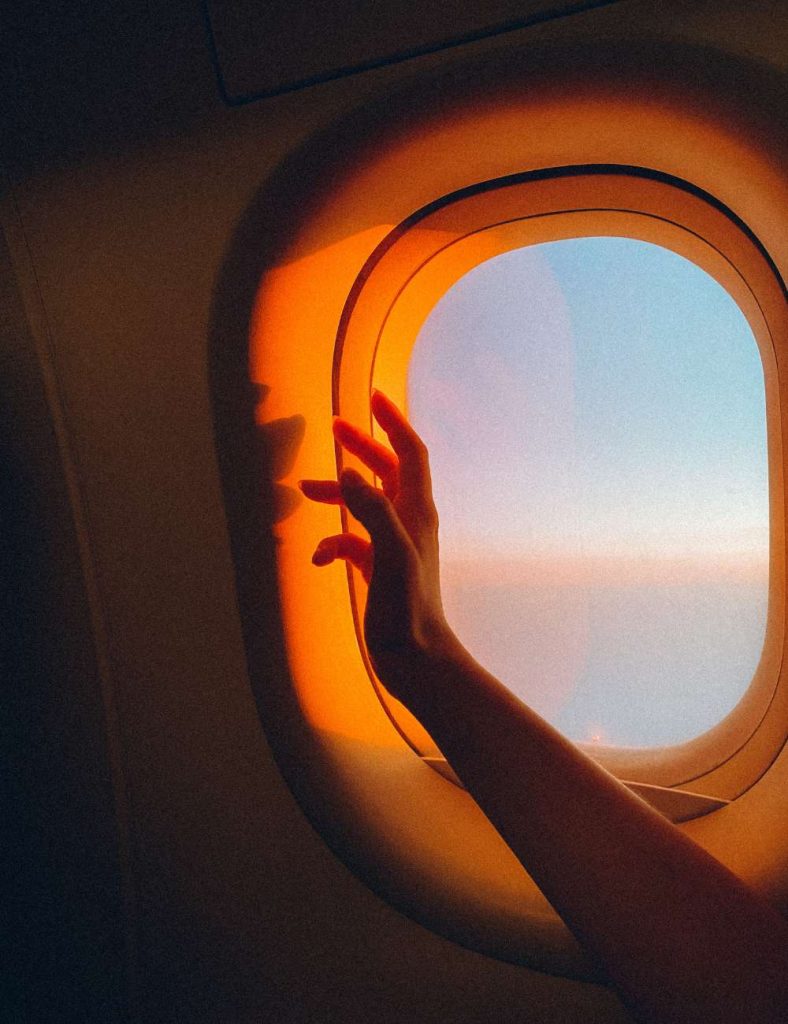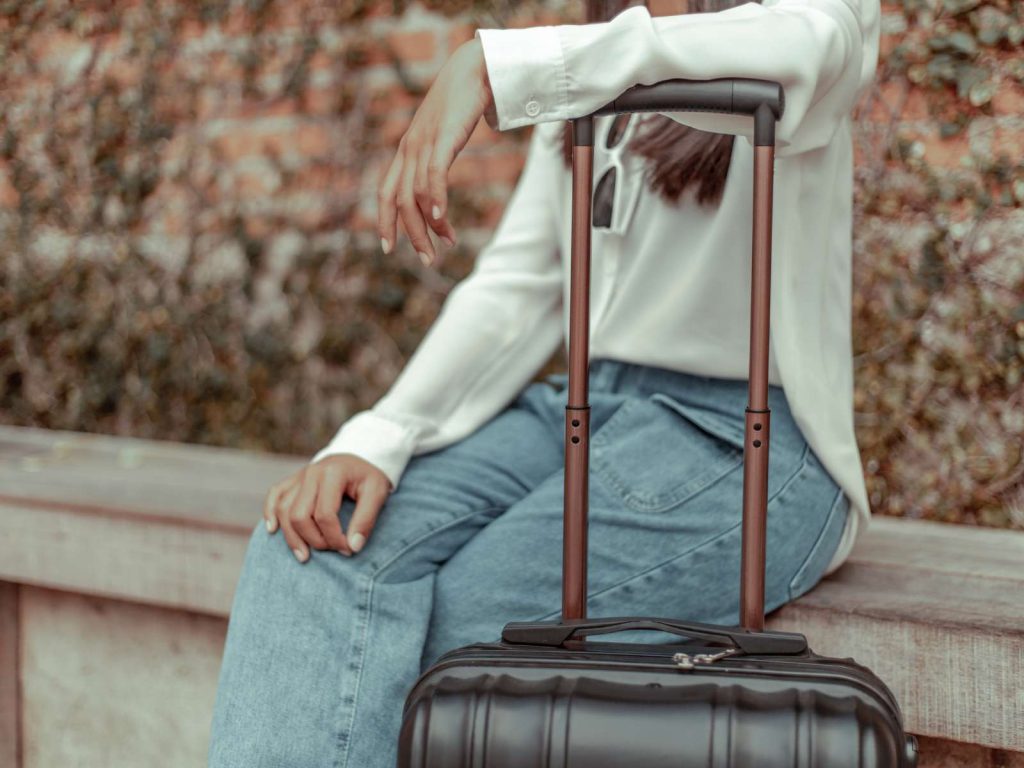Can you bring melatonin on a plane?
Some links in this post are affiliate links, which means I earn a small commission if you book through them, at no extra cost to you. This support helps keep this site running, the suitcase wheels spinning, and lets me keep writing ultra-detailed travel guides that are free for you to use to plan your next adventure.
Want to know if you can bring melatonin on a plane so you can sleep on your long-haul flight or reduce the symptoms of jet lag? Here’s all you need to know about travelling with melatonin and if you’re allowed melatonin in your carry-on luggage or checked luggage while flying.
Whether you’re switching time zones and need to reset your circadian rhythm or you’ve got a long flight and want to be able to get some shut-eye on the plane, many frequent travellers, flight attendants and pilots absolutely rave about melatonin. Including me!

But as with any dietary supplement or medication, it’s always important to double check and make sure you’re able to travel with it without getting in trouble or having it confiscated.
If you’re wondering can you bring melatonin on a plane, the short answer is yes, you can usually bring melatonin on a plane. Melatonin pills and gummies are totally fine to take on a plane from a TSA (Transportation Security Administration in the USA) perspective, but liquid melatonin has its own requirements (explained below).
Here’s a detailed explanation about bringing melatonin on a plane, as well as what melatonin actually is, what it’s useful for, how melatonin helps you with jet lag, and more.
Important: As with any dietary supplement or medication, you should consult with your doctor before taking melatonin, as there are some side effects and risks to be aware of. This post is based on my own experience with melatonin, I’m no medical expert, I’m just a useless sleeper who has found melatonin to work well for my body while travelling!
What is melatonin?
Melatonin is a hormone produced by the pineal gland in your brain, and it helps to control your body’s internal clock and sleep-wake cycle.
The pineal gland is inactive during daytime hours and then switches on when it starts to get dark, producing melatonin to signal to our bodies that it’s time to turn off that daytime alertness and instead start feeling calm, drowsy and ready for bed.
For some people like shift workers, night owls or travellers in a new time zone, natural melatonin production either happens at the wrong time or isn’t strong enough to aid sleep at all. For these instances you can purchase melatonin supplements to take before bed to help your brain and body recognise that it’s time to sleep soon.
Can you bring melatonin on a plane?
Melatonin pills on a plane
You can bring melatonin pills on a plane either in your carry-on baggage or your checked bags. There’s no limit to how many melatonin pills you can bring on a plane.
You might want to keep the pills somewhere easy to reach in case a TSA officer wants to take a closer look at a security checkpoint, but there’s no TSA rules against bringing melatonin in pill form on a plane.
My go-to melatonin pills are these 5mg fast dissolve tablets from Natrol, they’ve got a 4.7/5 rating on Amazon from more than 12,000 reviews. Natrol also has a 10mg fast dissolve tablet, I tried these but they were too strong for me and made me feel woozy rather than sleepy, if you’re just trying melatonin for the first time then I’d suggest getting the lower strength one first.
Melatonin gummies on a plane
You can bring gummy melatonin on a plane in hand luggage or checked luggage, and again there’s no limit on how much you can travel with.
Liquid melatonin on a plane
Most airports around the world have a limitation on how much liquid you can carry with you, and typically it’s one small bag of containers no bigger than 100ml or 3.4 ounces.
However, melatonin is considered ‘medically necessary’, so you can take liquid melatonin with you as long as you inform the airport security staff (like TSA agents in the USA). It’s recommended that any liquid medications are clearly labeled to speed up the screening process, so keep any melatonin in liquid form in its original packaging.
Can you bring melatonin on an international flight?
You’re allowed to take melatonin on an international flight, but whether you’re allowed to take melatonin across a border into a different country will depend on that country’s rules.
In the United States melatonin is considered a dietary supplement and can be purchased easily online or in over the counter in pharmacies and health stores. In many other countries however, including New Zealand, Australia, the UK and lots of European countries, melatonin is considered a drug and is only available with a doctor’s prescription.
Regardless of whether you bought it legally as a supplement in the USA, to bring any prescription medications into a new country would require you to have a note from your doctor.
If it’s just a small amount of melatonin then chances are it wouldn’t be found by security anyway, but if they do see it, you’ll either need to prove that you have a prescription or forfeit it at the border. I travel with melatonin all over the world (including the UK, Australia, New Zealand and all through Europe) and have never personally had an issue.
If you’re travelling with lots of melatonin then it might look like you’re purposefully trying to smuggle it in which would be a crime if it’s a controlled drug, so don’t go stocking up for your friends and taking it into a country where it’s prescription only. If you’ve just got enough for personal use then you’re extremely unlikely to get in trouble, they’ll probably just make you throw it out.

When should you take melatonin on a flight?
Melatonin typically takes 30-60 minutes to start working for most people, although for me I can feel the effect of a 5mg melatonin tablet in about 15 minutes, so it really does depend on your body.
If you’re planning on taking melatonin to help you get the best sleep on overnight flights then I’d recommend taking melatonin a few times before your next flight so you have an idea of how your body reacts. You don’t want to try it for the first time on a 12-hour international flight and realise that it actually doesn’t agree with your body at all!
One important thing to keep in mind is that once you take melatonin, you want to avoid anything that’s going to keep you alert, like watching a movie, using your phone or working on your laptop.
Electronic devices are an absolute hindrance to our natural melatonin production as the blue light suppresses the pineal gland’s melatonin-making process, and taking synthetic melatonin only to hold back your natural melatonin production isn’t great for your brain, body or sleep schedule. Avoid blue light exposure as soon as you’ve taken any melatonin.
If you’re taking melatonin to sleep on a flight, it’s a good idea to either read an actual physical book (I know, they still exist) or a Kindle without the backlight, or pop on a sleep mask, put some calming music on your noise-cancelling headphones and get comfy with a neck pillow so you’re ready to get some zzzzs as soon as that melatonin kicks in.
How does melatonin help with jet lag?
Aside from aiding sleep during air travel, melatonin can help you get used to the local time zone and ensure you’re sleeping at the right time for your new destination, rather than feeling desperately drowsy between 2pm and 10pm and then wide awake the entire night.
Taking melatonin at your normal bedtime (as in same number on the clock as when you sleep at home) when you arrive in a new time zone can help update your circadian rhythm, so your brain knows when it should be promoting sleep and therefore around eight hours later should be promoting wakefulness.
It can take a few days to really settle in to your new sleeping routine, but this is a good way to lessen the effects of jet lag and start your trip stress-free.
Can you buy melatonin at the airport?
If you’re travelling in the USA you might find melatonin at airport pharmacies, but to be safe I’d recommend buying melatonin before you head to the airport just in case they don’t have any and then you’re not stuck without it.
If you’re in another country you’ll need to check the local health care rules around melatonin to see if it’s available as an over-the-counter medication or if it’s prescription-only.
Is melatonin better for you than sleeping pills?
A melatonin pill and a sleeping pill do very different things.
Melatonin is an additional supplement of a naturally-produced hormone in your body, which tells your brain when to start closing things down for the night. Melatonin will (hopefully) make you drowsy and tells your body that it’s time to sleep, rather than actually putting you to sleep.
Sleeping pills on the other hand are generally sedatives and can pretty much knock you out, to the point where you literally can’t keep your eyes open.
Melatonin is less likely to be habit-forming, whereas most sleeping pills are prescription drugs and controlled substances, and they can be quite addictive due to their calming effect on the nervous system.
Both melatonin and sleeping pills can have negative side effects, though the fact that melatonin is available over the counter in the USA does indicate that the side effects are less dangerous than sleeping pills.
As with any medication, consult your doctor before deciding what sleep aid is best for you.
Other tips to minimise jet lag
- Try to switch into your new time zone as early as possible, ideally when you step on the plane. If you’re departing at 4pm your time but that’s actually 11pm in your destination, and it’s an overnight flight, then you could take a melatonin tablet right after the dining service to try and align with the time of day in your destination.
- Hydrate, hydrate, hydrate. Dehydration isn’t actually a symptom of jet lag but it can make jet lag symptoms like headaches, tiredness, irritability way worse, and we all know that flying dries out your body scarily quickly. Take your own water bottle to stay hydrated throughout the flight and when you land to keep your body as healthy and looked after as possible.
- Go to sleep and wake up at the appropriate time during the start of your trip. You might be tired after multiple international flights, but I can promise you that your ‘power nap’ at 2pm will turn into a five hour sleep and will totally screw up your circadian clock for the next day and beyond.
- Get into the sunlight as soon as you wake up on your first morning. Bright light tells our brain that it’s day time and to wake up the rest of our body, so immediate immersion into the daylight will help us update our body clock quicker.
- Get a window seat if you can, this way you can control the light that’s coming in. If you’re not a window seat fan then be sure to have a decent eye mask so you can block out all light after taking some melatonin.
I hope this has answered the question ‘can you bring melatonin on a plane’, and given you some helpful info about using melatonin while travelling. I’ve said it before but I’ll say it again, please consult your doctor before using melatonin for sleep, as there are side effects and potential interactions with other medication.
Other helpful travel blogs:
